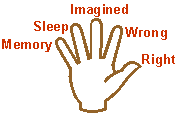Patanjali’s Yoga Sutras – Chapter 1: (Effort & Commitment – cont.; Sutras 1.21 – 22)
These two sutras (1.21 and 1.22) discuss the levels of intensity applied to actual practice and commitment to the goal. This way each person can progress at their own rate and still have a direct experience. Remaining aware throughout your practice is extremely useful and great freedom results from that awareness.
Yoga Sutra (1.21) – tivra samvega asannah. Tivra means fast, intense; Samvega is practice, momentum, conviction or enthusiasm; Asannah means very close, near.
Translated this sutra means…Those who practices with full intensity of feeling, vigor, and a firm conviction achieves concentration and its results quickly, as compared to those who’s practice is mediocre. More simply put – The goal is achieved rapidly through intensive conviction and practice
What Patanjali seems to indicate here is the intensity of conviction and practice will determine how quickly the reach the goal. Someone with all the time in the world to practice but with little conviction will not progress as rapidly toward the goal as someone (like most of us in the West) who has limited time but who’s practice is done with intense conviction and enthusiasm.
Yoga Sutra (1.22) – mridu madhya adhimatra tatah api visheshah. Mridu is mild, gentle or slow; Madhya means medium, moderate; Adhimatra is intense, strong; Tatah would mean, from that or from this practice; Api is also; Visheshah is differentiation or distinction (between levels).
This may be translated as…For all those who’s practices and conviction are both intense the degree of intensity is defined as three basic divisions of practice, those of mild intensity, medium intensity, and vehement intensity.
On the surface this sutra seems to be little more than an elaboration or restatement of sutra 1.21 (Success in yoga comes quickly to those who are intensely energetic), but in fact, the two sutras refer to related but separate ideas. According to traditional and modern commentators, sutra 1.21 addresses the practitioner in terms of their “relationship” to their practice while 1.22 refers to the “content” of the practice itself.
So what is meant by mild, medium or vehemently intense practice? On popular view is: a mild practice is one that is irregular and lacking in enthusiasm, basically luke-warm. The medium level of practice is more regular, but is isolated from the rest of the student’s life.
So what is a vehemently intense level of practice? This could be perceived as a practice that is led by being clearly, and continuously focused on the goals of yoga, where the student sees all aspects of their life as an opportunity for spiritual growth. The more that practice is incorporated into daily life, permeating all action, the sooner the veil of Maya (ignorance, illusion) diminishes. But here our Western conditioning may tend to push too hard, so caution needs to be exercised when our egos urge us to, “do more, work more, be more!” This caution reminds us that any practice or lifestyle that pushes on, disregarding balance and harmony will generally lead to lopsided development, and an outlook that is too rigid. By keeping these thoughts in mind, we are less likely to become attached to our physical practice and much less likely to judge and define ourselves by our progress (or lack thereof), which means we’ll be less likely to be distracted from our true goals. The bottom line is, all practice should be balanced by non-attachment.
*Part 7 may be viewed by clicking on: The Teachings of Yoga (Part 7: Effort & Commitment) – and parts 1 through 6 may be found at the bottom of part 7.
*Rae Indigo is ERYT500.



 Practice (abhyasa) and non-attachment (vairagya) are the two foundational principles on which the entire system of Yoga rests. Through the cultivation of these two principles, all other Yoga practices evolve and eventually mastery over the mind field (chitta) occurs, and allows the realization of the true Self (Atman).
Practice (abhyasa) and non-attachment (vairagya) are the two foundational principles on which the entire system of Yoga rests. Through the cultivation of these two principles, all other Yoga practices evolve and eventually mastery over the mind field (chitta) occurs, and allows the realization of the true Self (Atman).
